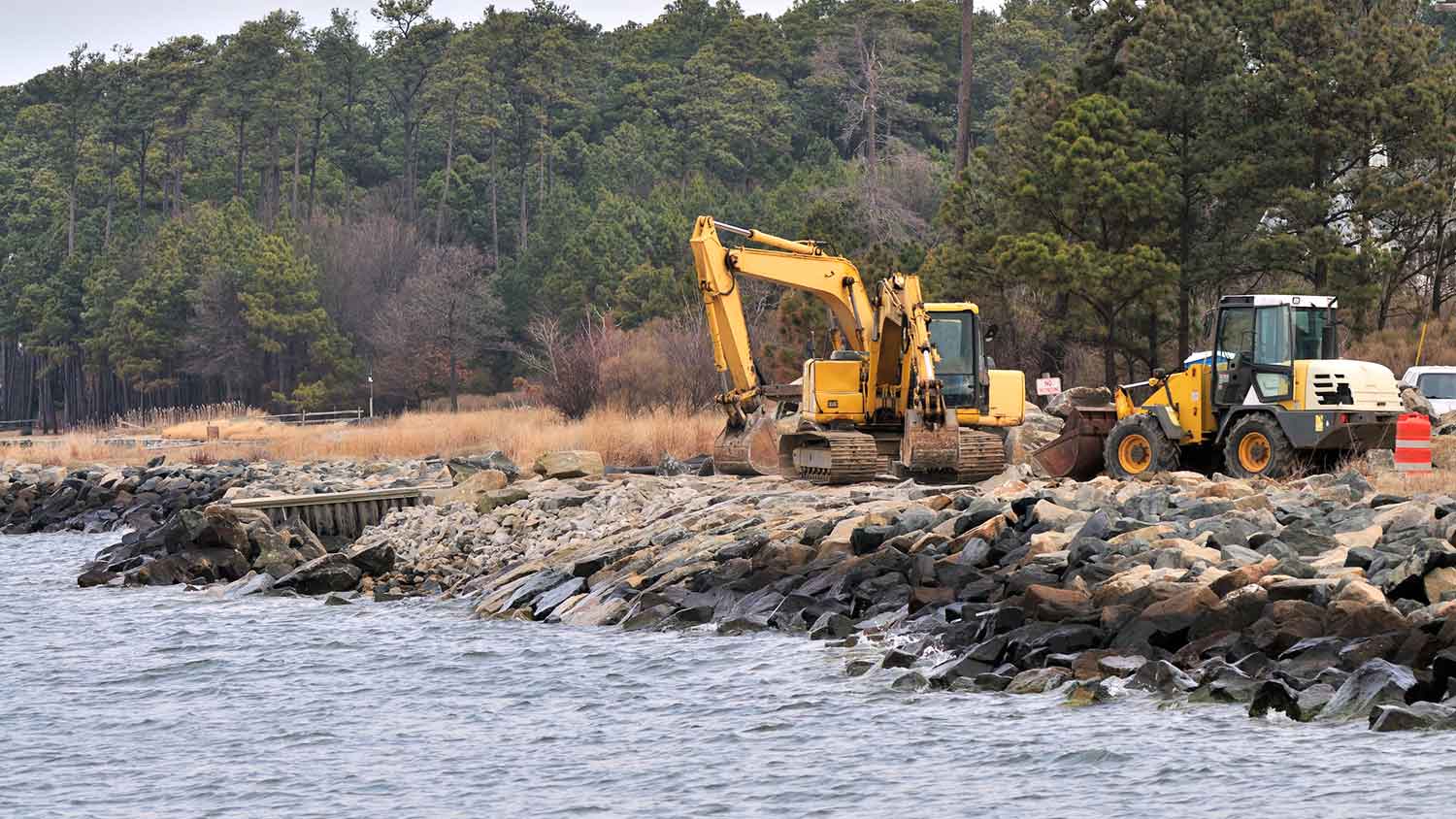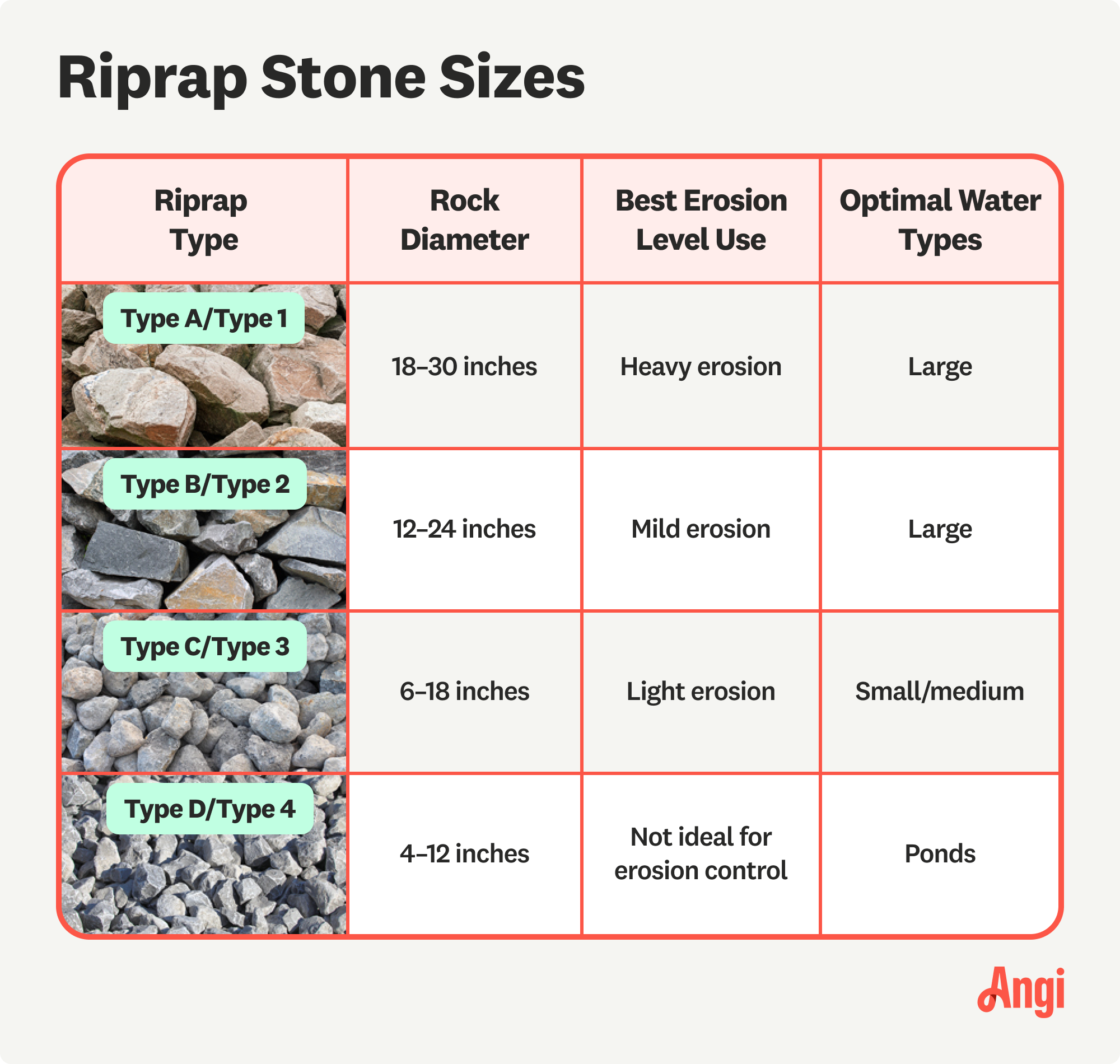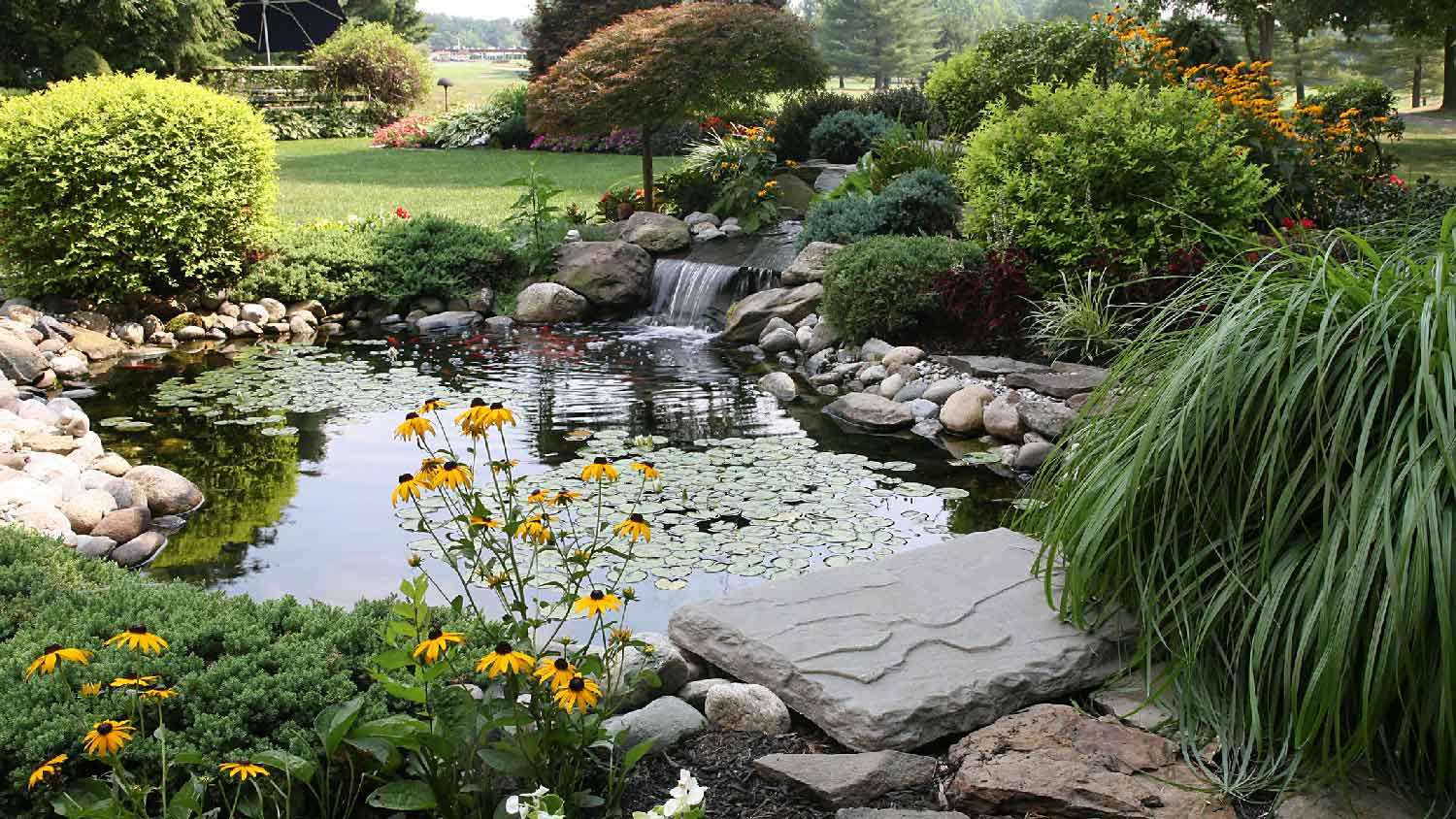.jpg?impolicy=leadImage)
Landscaping your yard adds curb appeal and expands your home’s living space into the outdoors. Learn how much landscaping costs for various projects.
You don’t need to turn on the radio for this kind of rap


Riprap is the ultimate solution to prevent erosion near shorelines, streambanks, ponds, and ditches. But you need a landscape grader or other licensed contractor with expertise in grading the land and laying the rock. If you’re wondering about the people who do riprap, we’ve got you (and your landscape) covered.
A landscape grader is the best professional to install riprap because they’re experts in grading land, designing riprap, and installing rocks to stop soil erosion. They use grading, soil compaction, geotextile fabric, and properly sized rocks to create long-lasting stability. Hiring a landscape grader is money well spent because it ensures your water-adjacent property is protected long-term and looks beautiful.
A seawall contractor can install riprap if they’re experienced with the methods of grading land and laying the rock. Seawall contractors work with a range of materials, including concrete, vinyl, treated wood, steel, and rock. They focus on building walls or embankments to prevent land erosion, and this sometimes includes laying riprap.
A seawall contractor near you will know about local guidelines and specific issues with shorelines. If you decide to work with a seawall contractor, make sure you get references of past residential riprap projects they’ve done.

A construction company can install riprap if it specializes in shorelines, seawalls, and riprap installation. Your local general contractor might not have the expertise, training, and equipment to design and install riprap that will last and prevent soil erosion.
People who do riprap have a special skillset, so be sure to ask for references of past riprap projects and how they’ve held up over time.
Landscape graders install riprap in a multi-step process that involves grading the land and carefully placing layers of rock.
Prepare and grade the slope: A landscape grader excavates the slope to achieve the desired grade (no steeper than a 3:1 horizontal to vertical slope). They also clear away debris and vegetation.
Compact the soil: A pro compacts the soil to create a solid foundation for the tons of riprap that will sit on the surface.
Add geotextile fabric: They secure a layer of geotextile fabric to help prevent soil erosion.
Lay gravel layer: A landscape grader lays gravel or small stones to create stability for larger rocks.
Place large rocks: A pro staggers the rock design, mixing shapes and sizes and ensuring good contact between rocks.
Fill in gaps: To stabilize the riprap, a pro lays smaller rocks in the gaps.
Install border: A pro might add a decorative border or enclosure.

Installing riprap costs anywhere from $70 to $400 per linear foot, and the total project cost depends on the size of the project in addition to your property’s condition and slope. Talk with at least three contractors to get bids for your project.
DIYing riprap is a bad idea due to the potential environmental and legal ramifications. Plus, you could damage your shoreline property if you make even a small mistake. Achieving a well-sloped and well-built riprap shoreline is incredibly difficult and requires heavy machinery such as an excavator, dump truck, and loader.
Shorelines and coasts are also regulated, making it necessary for installers to have proper licensing and permits and be experts in building construction methods. Having riprap installed professionally is money very well spent.
From average costs to expert advice, get all the answers you need to get your job done.
.jpg?impolicy=leadImage)
Landscaping your yard adds curb appeal and expands your home’s living space into the outdoors. Learn how much landscaping costs for various projects.

How much does hardscaping cost project by project? Check out our breakdown for every price tag you need to know, from outdoor fireplaces to patios.

Discover how much hedges cost to plant, whether hiring a professional for the job or doing it yourself to frame your yard in beauty. Read on to learn more.

There are reasons to grade or slope your yard beyond aesthetics—drainage is the main one. Read on and learn how to have an informed discussion with your pro.

How big is your pond? Knowing how much water your pond can hold will help you choose the right treatments for it and the proper number of aquatic life.

A perfectly level ground is crucial for a safe and enjoyable pool experience. Learn who to hire to level the ground and prepare your backyard oasis.